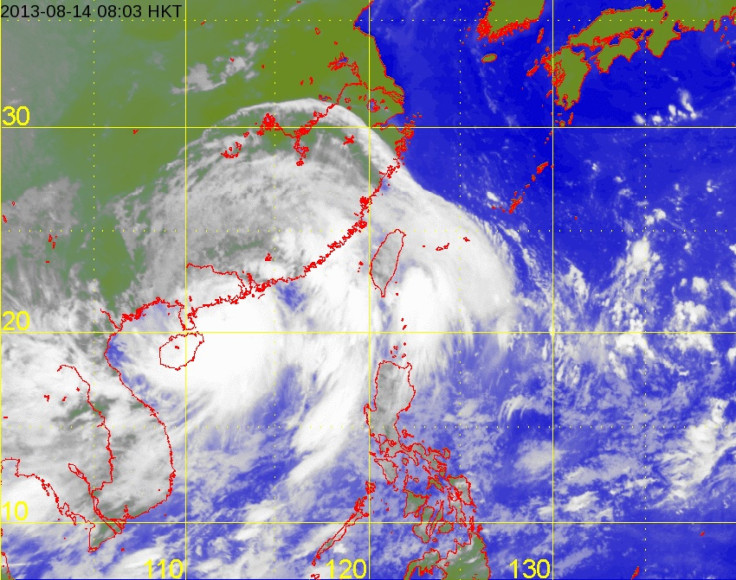Typhoon Utor Brings Hong Kong To A Standstill, Disrupts Regional Travel

After swamping the Philippines and displacing thousands of residents, Severe Typhoon Utor took aim at Hong Kong Wednesday morning. The storm, packing winds of up to 177 kilometers (110 miles) per hour, brought the city to a virtual standstill as it barreled along a course toward the Chinese mainland.
At 7 a.m. local time, Severe Typhoon Utor was centered about 270 kilometers (168 miles) southwest of Hong Kong, and was forecast to move northwest at about 16 kilometers (10 miles) per hour toward the western coast of Guangdong province in China.
The Hong Kong Observatory recorded maximum sustained winds of up to 108 kilometers (67 miles) per hour Wednesday morning, with gusts of up to 128 kilometers (80 miles) per hour, as Utor inched closer to Asia’s financial hub.
Forecasters expect the typhoon to be closest to the city during the day Wednesday as it skirts by around 250 kilometers (155 miles) to the southwest. Overnight Tuesday, the Observatory raised the Gale or Storm Signal to No. 8, its third-highest warning, and said the weather was likely to affect flights in and out of Hong Kong International Airport.
Hong Kong flag-carrier Cathay Pacific, Asia’s largest international airline, preemptively canceled 15 flights in and out of Hong Kong International Airport Wednesday, while its Dragonair regional unit canceled an additional 15 flights. All alterations thus far have affected regional routes within the Asia-Pacific region, though more cancellations are expected. The airline strongly encouraged customers to avoid non-essential travel to and from Hong Kong between Tuesday evening and Thursday morning, and put a special ticket waiver in place to assist passengers in changing their travel plans.
With a total of 45 arrivals and 49 departures axed and nearly 100 more delayed Wednesday morning, Hong Kong International Airport issued a special announcement warning travelers to contact their airlines for the latest flight information or check with the airport’s website before arriving. The airport also noted that ferry services to Pearl River Delta had been suspended until further notice due to the adverse weather conditions.
Hong Kong also closed container terminals, suspended ferries out of the Hong Kong-Macau Ferry Terminal and China Ferry Terminal, suspended most routes on New World First Bus and Citybus, and reduced train service in anticipation of the storm, the government said on its website. Emergency workers hoisted red flags at all beaches, and warned residents to stay indoors, abstain from water sports and wait out the severe typhoon.
The Home Affairs Department said in a statement issued Wednesday morning that it had opened 19 temporary shelters in various districts, though just 41 people sought refuge. There were no reports of flooding or landslides, though one woman who was hospitalized for an undisclosed storm-related injury Tuesday night was later discharged after treatment, the Hospital Authority announced.
The courts, stock market and most financial institutions were all closed Wednesday morning, with plans to reopen later in the afternoon only if the Gale or Storm Signal dropped below No. 8.
Hong Kong receives an average of about six tropical cyclones annually, according to the Hong Kong Observatory. Severe Typhoon Utor is the strongest to approach this year and the most serious since Severe Typhoon Vicente breezed by last year. Vicente similarly closed schools and banks and halted flights in and out.
© Copyright IBTimes 2024. All rights reserved.






















